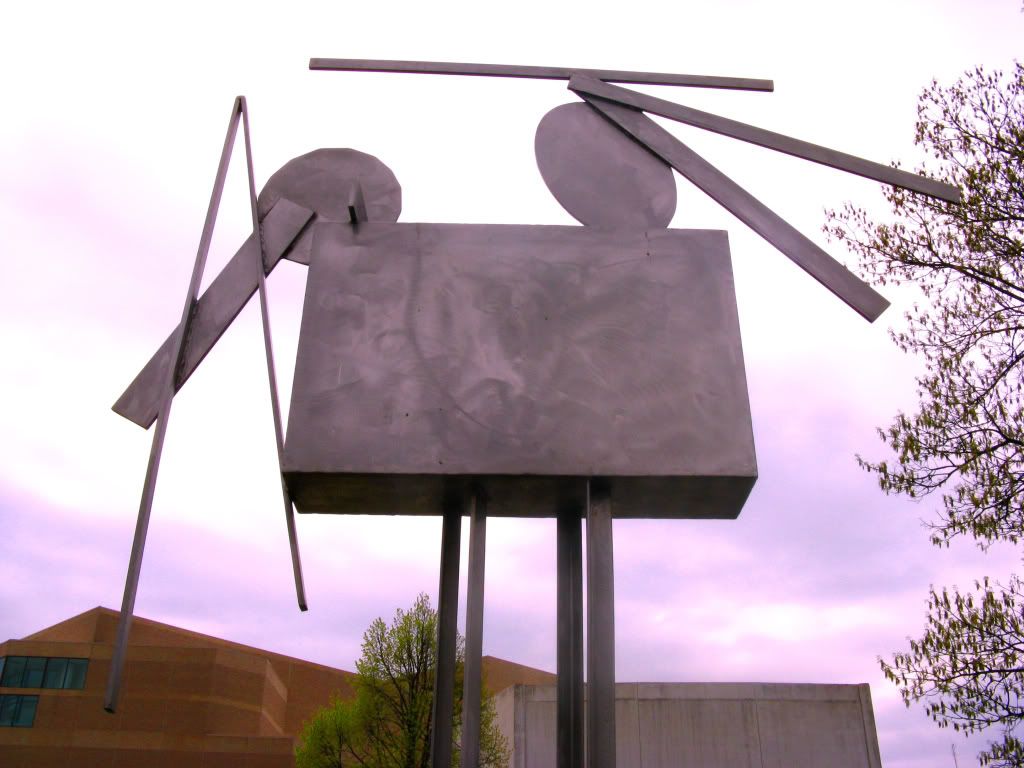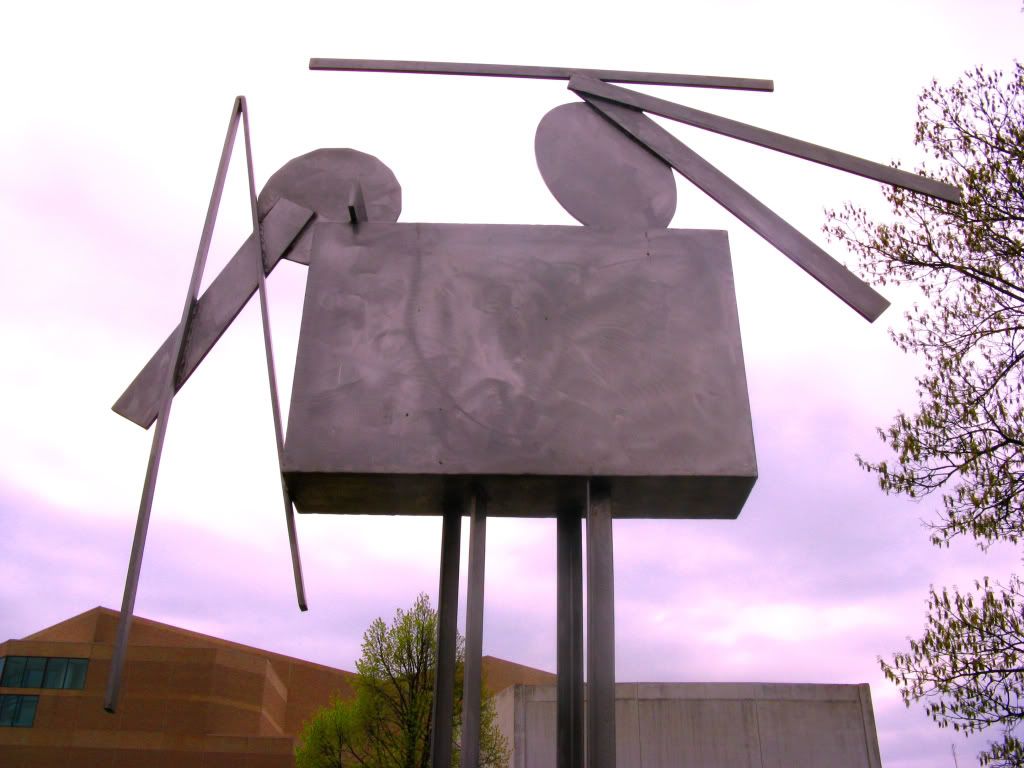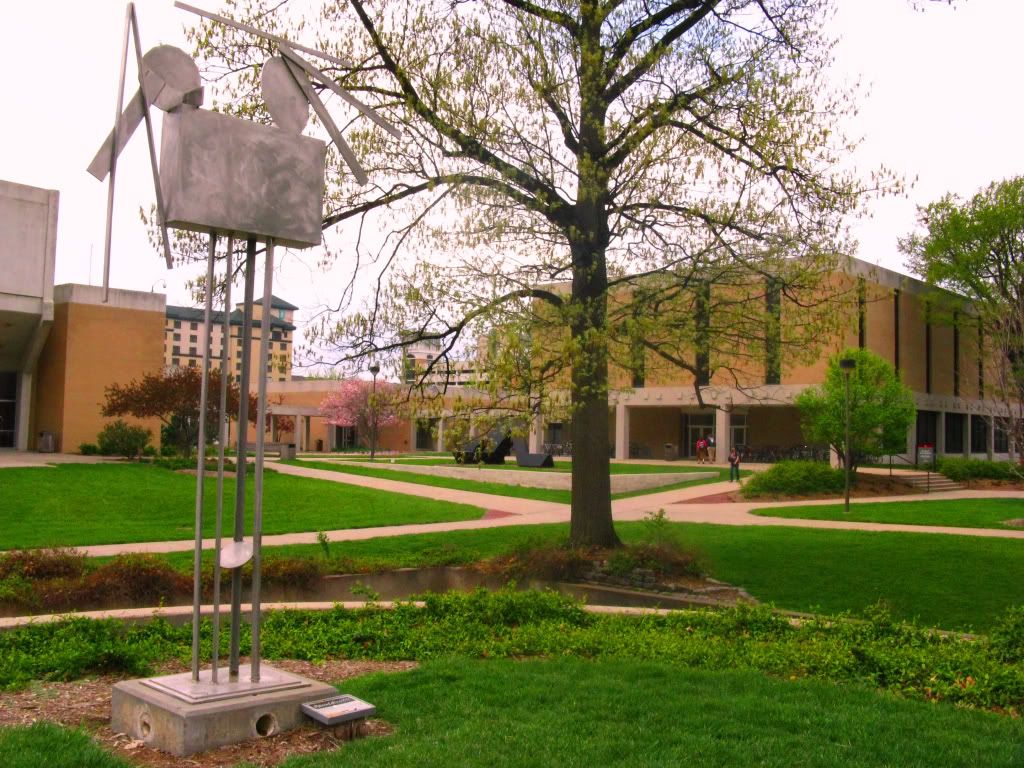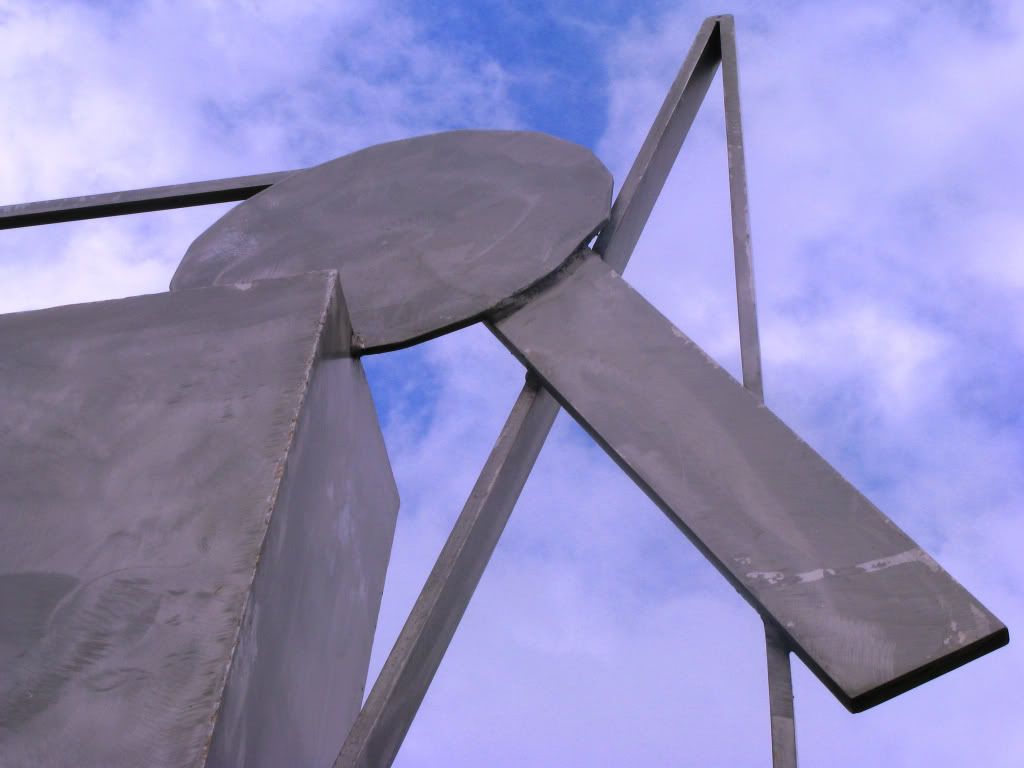Authors Note:
Although taking (rather given) option 2 to write a letter instead of writing a traditional essay analyzing the rhetorical elements of the sculpture, I still maintained a degree of analysis as my approach to the letter, discussing the argument and its support with the sculpture. The form is obviously different, given a different tone to fit a letter over a formal paper. A notable change is in that of grammar and structure, intentionally created small mistakes to make it read more poetic or artful than a straight description.
In terms of analyzing Superstructure on 4, it was much closer to the analysis of the photograph than of the comic relating to the arguments formation. Rather than starting with a fairly clear argument I relied on the elements to lead the arguments discovery which was yet revealed as its current state only upon the initial drafts of writing, a naturally fitting conclusion.
I had originally chosen this sculpture partly because it "spoke to me", but mostly because my (Arch) perceptual drawing class had just started a positive-negative drawing for which I was in search of a subject, the forms of Superstructure on 4 working nicely for it. Indeed the subject matter worked out making two successful pos-neg drawings. Choosing the sculpture to write a letter to also panned out, not requiring/presenting significant resistance, although it did take a long contemplation. My positive-negative analysis also revealed a couple things more clearly as noted in the letter.
The main changes made from first draft to final were a couple spots expanding on my concepts, such as the organic assembly arising from the geometric components. I didn't take any major changes of direction, especially because with only one review there was less time for change as it was.
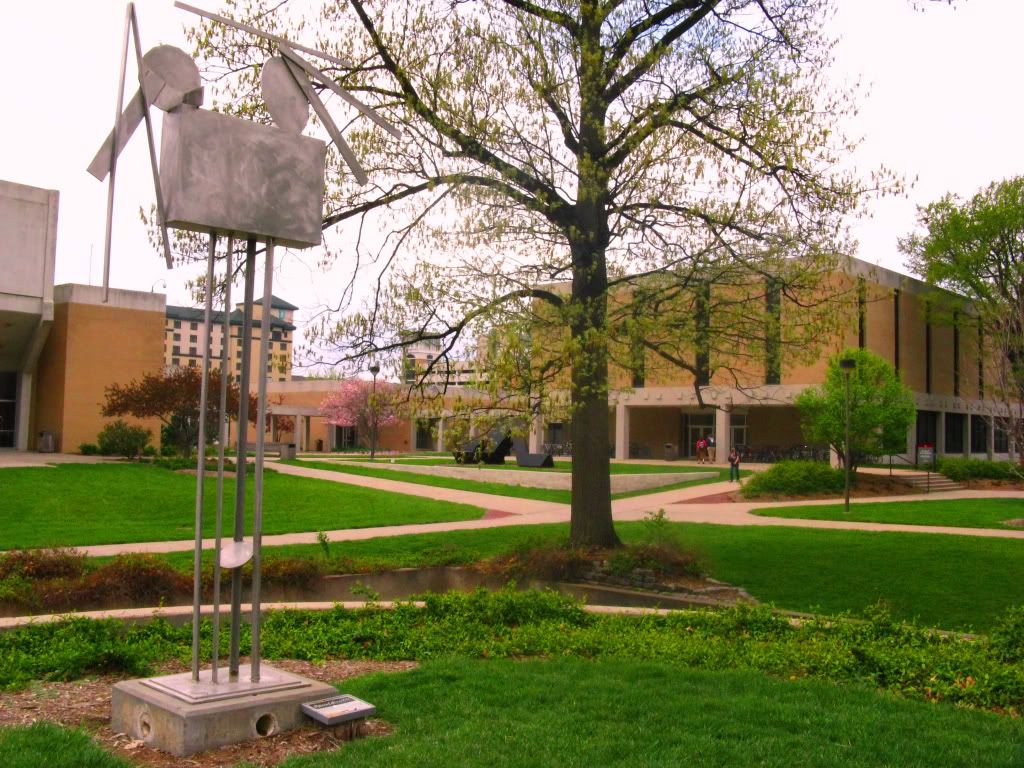
You are full of coherent conflictions, dichotomies several as you sit outside here among brothers and sisters. Although you appear simple at glance, you play as sculpture upon investigation, revealing new levels of thought, and I would discuss such.
First and most present is the burnishing of your surfaces. Although all of your structure is constructed geometrically, your stainless steel faces show the reflecting brushes of a free hand, nigh upon chaos. Your form upon glance is that of geometric, industrial, constructed origin. Your straight lines, right angles, even your ellipses and hexadecagon, your stainless steel materiality, your cleanly welded connections and planar restrictions suggest not a free amalgamation but strictly logical assembly, thought-out fabrication.
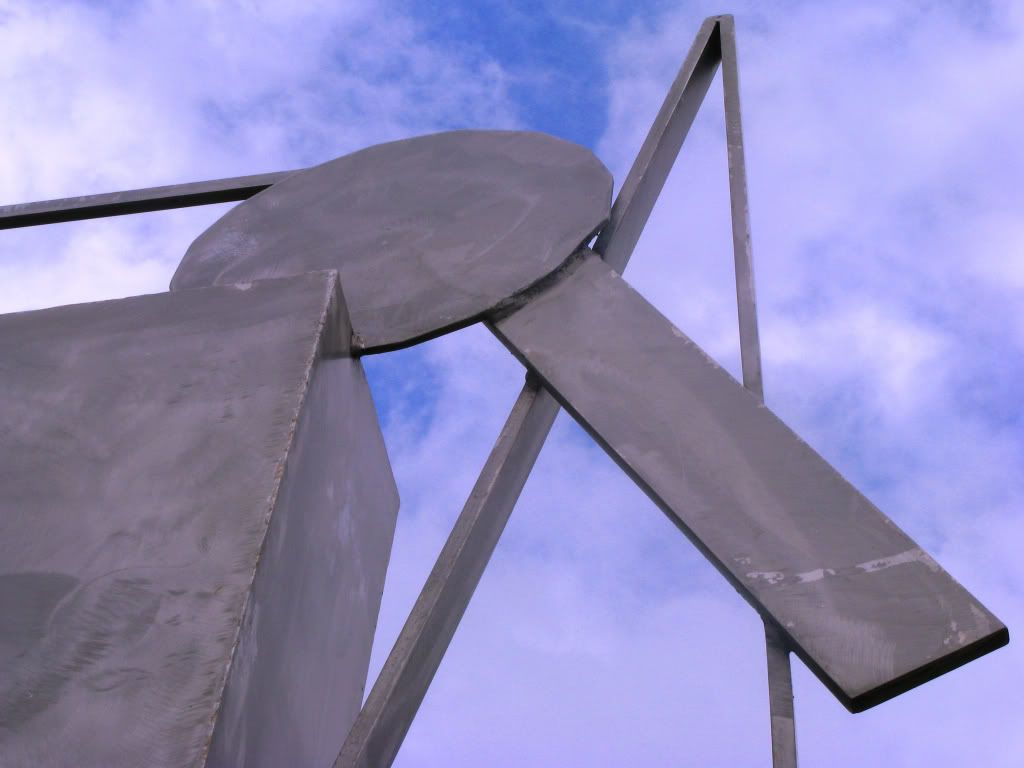 The surface patterns instead at once dematerialize your surfaces, conflicting your form simple, but fit so naturally, not seeming out of place. Certainly, in the suns of bright day the burnishing begins to override your physical voluminous shape. Beyond the play of shapes together, the brush makes each surface its own possible focus point drawing the eye for only its own contemplation. With far cry from geometric industrial construction, what do you tell us with this apparent conflict of themes?
The surface patterns instead at once dematerialize your surfaces, conflicting your form simple, but fit so naturally, not seeming out of place. Certainly, in the suns of bright day the burnishing begins to override your physical voluminous shape. Beyond the play of shapes together, the brush makes each surface its own possible focus point drawing the eye for only its own contemplation. With far cry from geometric industrial construction, what do you tell us with this apparent conflict of themes?Next comes from your still geometric assemblage, the totemic presence that many of Smith's other works carried. Your shape in this regard has been described as planar appendages jutting from a boxy torso upon four stilt-like legs. And although other may attribute this organic flow to other, but still organic, forms, your precedence and my freedom of analysis yet shows man in your form. As seen and noted, your form simple is constructed of geometry, each piece a panel of straight depth and each panel simple shape. The most free-form of your components is yet a foci-bound ellipse.
Although irrefutably reduced and abstracted to near non-objectivism your stance portrays still of the organic. I believe it comes from the organic assembly, more rather the angular progression of those planar appendages, flowing in an arc over your tilted head, showing not many arms but a movement or form of just two. Your geometric construction betrays again its origin to display free-form expression, leaving the nature of its simple abstracted components to create life.
Even your name gives duality to your existence. Superstructure on 4. Where Superstructure with 4 or even Superstructure 4 would combine your stance as one, your title makes us break your shape in two. Cut at the top of your stilt-like legs, the superstructure lies on top, based by your boxy torso with planar appendages attached, resting on top of the separated 4 that serve as a stand for the rest to sit upon. No longer can you be looked at as one geometrically flowing stance but now as one form resting upon an equally abstracted pedestal.
Indeed this separation emphasizes this third dichotomy in your being. Although only forming a third of your height, your superstructure, your extraordinary construction, contains two thirds of your elements and exponentially more interplaying complexity. The two-thirds tall legs are in fact pressed to such simplicity as to further repeat this difference. First and especially noted in my positive-negative analysis of your form, your legs seem much too straight and narrow to be true to your physical form. I checked several times of my measurements and my drawing before I could convince myself that the proportions were true to your life. Thankfully for form and possibly stability, your legs are tied by this ellipse. Not only does this single piece tie and attach your legs together, but it serves as a much needed break from the straight and narrow of your stilt-like legs. Even when it seems out of place in first glance, as if fallen from the superstructure above, this piece as the rest seems all so natural when placed in a negative-positive eye.
So what do your dichotomies explain, do your conflictions portray, your differences exclaim? I know not specifically and I think not that it should be limited specifically in argument. Instead it talks to the simple appearance, existence, possibility of such apparent contradictions. Instead of contradicting they act more as colors, the opposites not being repulsive together but in fact, and they are called such, complementary. For just as complementary colors serve well together and are used as a simple implementations of color to create interest and cohesion, not confusion and disparity, your opposing combinations combine smoothly so to create that which is greater than the sum of its parts. But what for these oppositions exist? What you ask of art, of me, of us, is to look for such plays of conflict and hidden dichotomies as we travel the day, to seek revel and understanding in these acknowledgements, and to leave our own distinctive complements as well.
